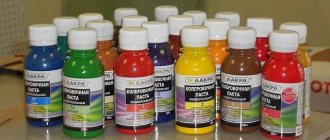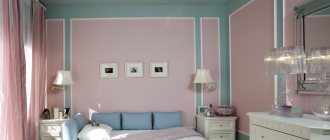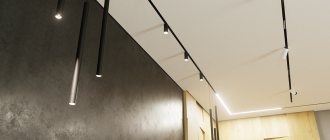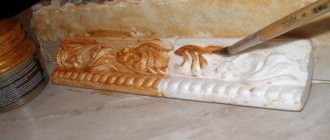What kind of paint is this and what is it for?
Attention
Kohler is a rich and bright paint with high pigmentation and good miscibility with the base. Needed to give the required shade to the base paints (they are initially white). Any type of paint is used as a basis for tinting, but choosing a color for it is more difficult.
The tinting process can be carried out either with special equipment or manually, at home.
- With a mechanized method, an exact shade can be achieved. This is necessary to tint several cans or match the color to an already painted surface.
- Tinting at home is a simple process and saves time on traveling to tinting centers.
It can be of any consistency, but more often it is in the form of a paste or thick paint. Powdered formulations are also available. Coloring properties are achieved by adding organic and inorganic pigments to the composition. The first option often prevails, as it is more saturated. But organic pigment is less lightfast than inorganic pigment.
Variety of colors
There are two types of colors on sale, with different consistencies. The first type of colors is very thick in consistency and resembles a paste. When added to a white base, you will get the most dense, intense and vibrant color.
The second type of colors is thinner in consistency and very intense. When you mix an intense color with a white base, you get a muted pastel color.
Intensive colors are increasingly being used, this is due to the fact that manufacturers present a wide range of color palettes for paints, with different areas of application, suitable for covering various surfaces.
Colors are produced to cover various surfaces, this significantly improves the result. On store shelves you can find colors for:
- Colors for coating wooden surfaces
- Colors for water-based paints
- Colors for enamels
- Colors for varnishes with a translucent consistency; using it you can achieve silver, gold, pearl and copper shades.
Manufacturers produce base and color in tandem. Builders use the base and colors of the same company in their work. This solution significantly reduces the risks of obtaining poor-quality coating.
When mixing base and color from different companies, there is a possibility of the composition collapsing. After applying a composition of different colors and bases, after drying, it is possible that the paint will crack and then crumble. It is better to use components from one company.
Photos of color and design options
Further in the photo you can see samples from the color catalog and design options for the completed work.
Selecting a shade of paint color for walls
You can choose the color and shade of paint you like using color catalogs. Please note that the desired shade will look different on the walls than on printed samples or a monitor. Therefore, it may be necessary to adjust the lightness already on the surface to be painted.
The surest choice is to do a test painting of small sections of all four walls. In a room with walls of different textures, paint the areas where the textures meet.
For an objective result, the paint needs to dry and you need to look at it at different times of the day. You may want to lighten the shade (make it pastel) by diluting it with white color. It would be a good idea to “try on” the shade of the ceiling.
Is it possible to paint a wall surface?
To paint a small fragment of a wall, you can use a color scheme. The use of such a product over large areas is irrational for two reasons:
- Big expense . The product is sold in small containers. In terms of regular paint it turns out to be very expensive.
- Poor application . This reason is due to the density of the composition. For drawing small and clear details this will be a plus, but for painting large surfaces it will be a minus.
Style solutions: color choice
There are a number of generally accepted color options based on the functionality of the room and classic combinations of shades. However, creating a truly original space requires an individual approach to color choice.
Calm shades: beige, light gray, peach, milky, ivory
The calm style suits bedrooms and bathrooms. Choosing one color for the walls from the listed options will allow you to diversify the decor with textiles of similar shades (curtains, towels, bed linen). You can add a few bright accents in soft shades of lemon, lavender, and gold to create a romantic flair.
Elegant colors: turquoise, matte black, grey, café au lait, chocolate
The elegant style relies on neutral, natural shades. They create an excellent base for introducing textured finishing elements into the interior, which can be either bright (as opposed to neutral) or inspired by natural materials (wood, metal, brick). A particularly elegant technique is considered to be the interior decoration of a room, made in a single shade, but combining many different textures on the walls, ceiling, floor and decor.
Bright style in the apartment: blue, green, light blue, pink, purple paint
You can add brightness to a room by giving preference not to one shade, but to several, each of which is self-sufficient. The combination of pure colors allows you to add an oriental flavor to the interior, a work atmosphere, an imitation of spring blossoms or a feeling of celebration - the choice of the mood of the room depends on its functionality and is limited only by the degree of imagination of the interior design.
How to choose?
Let's consider how best to choose the appropriate color scheme and what you need to focus on. Selection criteria taking into account characteristics:
- Manufacturer . Despite prejudices, a domestic manufacturer can offer a product that is no different in quality from a foreign one. And its price will be significantly lower. If the base paint has already been purchased, then it is advisable to take the color from the same company.
- Tara . It is more convenient to use packaging with a narrow neck, this makes it much easier to pour the required volume.
- Type of base paint . The most popular option is for water-based emulsion. This doesn't mean there aren't options for other foundations. But finding them on the market will not be easy.
- Availability of shade map . Almost every manufacturer has such brochures; it is much easier to select the desired shade from them. It is better to check with the seller when purchasing whether such a card is available.
- Hue . Depending on the lighting, the finished shade may look different in different rooms. The recommendation is not to mix the entire volume of the base at once, give it time to “get used to” the shade and make possible adjustments.
- Pigment type . They are organic and synthetic. For a well-lit room, it is better to choose a product with a synthetic pigment, as it is less susceptible to fading in the sun. Under artificial lighting, organic pigment looks better: it is more saturated and has natural, “pure” colors.
Tinting methods
There are two ways to mix base paint with color: manually and using computer systems. Each method has its pros and cons.
When mixing by hand, the color is added to the paint in small portions, and the color is created “by eye.” You don’t need any complicated equipment for this, plus you can tint the paint anywhere. Accordingly, this method is good for preparing a small portion of paint that can be used immediately. This method is not suitable for mixing paints in large quantities and in several steps, since when creating subsequent portions it is almost impossible to achieve the original color.
Manual method of mixing color Source bauemotion.de
How to properly dilute?
The process of mixing color is an important step when painting. For the best result, the following technology must be followed:
- You need to dilute the color in a clean container, for example, take a plastic or enamel bucket.
- Pour a small amount of paint into the container.
- Place it carefully with a mixer or by hand. You may need to add a thinner appropriate to your paint type. Stir until it reaches the consistency of milk.
- Prepare a tinting solution. It consists of 100 g of paint and the necessary (for the total volume) color scheme. Mix the solution until the color is uniform.
- In small portions and stirring constantly, pour the solution into the main volume of paint.
- If foam forms during stirring, it is necessary to let the composition settle until it disappears.
ImportantExperts advise not to start painting immediately after mixing and to let the solution sit. This will take 1-2 hours. Then stir well again.
We invite you to watch a video on how to properly dilute paint for tinting walls:
Mixing technique
Before you start tinting, it is worth determining how much color and paint you will need. When preparing by hand, it is difficult to get the same color the second time as the first time. To avoid such moments, calculations are made and exact proportions are determined.
To avoid spoiling all the material, first mix a test color. 100 ml of paint and a few drops of pigment are added to a small container. It is better to dose with a special syringe: this will help you find out the exact amount. Color should be added until the desired shade appears.
Next, the resulting sample is rolled out on the wall, since the color often changes on the working surface. You need to wait until the paint dries and look at the shade in different lighting. If the palette suits you, work continues.
To make a large volume, take a bucket and mix the mixture with a construction mixer. The paint is diluted with water and colors are added to it. To paint the entire surface of the wall, the number of calculated pigments is reduced by 20%. That is, if 100 ml required 10 drops of solution, then 1000 ml will require 80. The tinting composition is added in small portions to the bulk.
It is important to remember that the color is prepared in one container, since different shades may result in different ones.
Coloring stages
Painting walls is divided into several stages:
- Preparing the wall surface : leveling, eliminating defects with putty. Then the entire surface is sanded with sandpaper and covered with 1-2 layers of primer. Read about how to perfectly putty and evenly paint walls.
- The stage of preparing the color and mixing the paint . It is discussed in detail above.
- Wall painting stage .
For work, a roller with a fur coat is used. Its optimal size is 15-18 mm. You will need a bath and a small brush. Each time you pour paint into the tray, you must thoroughly stir the main volume of paint in the bucket. The pigment gradually settles to the bottom. If you do not stir regularly, you will end up with a darker shade than you started with. Painting begins from the corner of the room: the corner itself is painted with a brush, and the surface is treated with a roller at a distance of 5-10 cm on both sides of the corner. All stripes are applied vertically, overlapping. If painting is done over wallpaper, then the joint of the wallpaper and the joint of the coloring compound should not match. - Drying stage . It takes about 5 hours. More precise recommendations are indicated on the packaging. Subsequent layers are applied only after the previous one has completely dried.
We invite you to watch a video about the stages of painting a wall:
6Consider the combination of walls and furniture
When choosing finishing materials, keep in mind the furniture and textiles that you will place in the interior. Is there anything bright or accent among these elements, for example, a rich red velvet sofa? Or, on the contrary, all the furniture is very laconic and restrained, and you think that the interior will turn out faded? The answers to these questions should become the basis for choosing a finishing material.
Designer Tatyana Zaitseva:
Decide right away what you want to focus on. If these are walls, then you can choose bolder tones, but if not, it’s better to stick to lighter, neutral ones.
However, keep in mind that each color has its own tone, which makes it either warm or cold. Cool shades will not look harmonious next to warm ones. Therefore, combine warm with warm, cold with cold.
Tips and tricks
When using colors to paint walls, you should adhere to the following recommendations::
- When applying to a putty surface, a layer of primer is a must. If wallpaper is already pasted on the wall, then you can skip this step.
- All work with paint is carried out with gloves.
- Simply adding color to the main volume of paint is not enough. It must first be mixed with a small amount (about 100 g) of the base and only then gradually added to the main volume.
- It is important to constantly stir the finished mixture. Then the color is uniform at all stages of painting.
- Before starting work, the roller must be rolled out, that is, soaked in the coloring composition and rolled over unnecessary pieces of wallpaper.
- It is better to try the paint in a place where it will not be visible (there is a cabinet or other furniture planned there).
- It is most convenient to paint the corner near the stream with a roller.
- All layers should overlap, not coinciding with the joints on the wallpaper.
Our experts have prepared a number of materials for those who are planning to paint the walls in their apartment with their own hands. Read about how to refresh the interior of the living room, bedroom, hallway, bathroom and toilet.
Using the color when painting walls does not cause any difficulties . It is important to approach all stages of painting work correctly, then you will get a well-painted room, without flaws or defects. It is advisable not to overlook a single detail, since it is the little things that make up an excellent result.
Application of color
Using color is not as simple as it seems at first glance. A novice builder and amateur needs to know that color consumption per 1 kg of paint is indicated as a percentage. With increasing base weight, the percentage of color does not change.
How to dilute paint colors is more easily presented in percentage terms.
- The percentage of color in oil paint should not exceed 15%.
- The percentage of color in water-based paints should not exceed 20%.
- The percentage of color in other base compositions should not exceed 7%.
When using a thick paste color, even with a slight decrease in the percentage of the base, the color will turn out bright and saturated.
The use of liquid intensive color will not give a rich color when using water-based paint. The color will be a muted pastel. When choosing a color consistency, it is important to take this factor into account.
Not only colors for paints intended for room design are appearing on sale, but also for facade work. The color improves the paint's resistance to various external factors, ultraviolet radiation and various natural precipitation.
Not all colors have been developed that are suitable for use in medical and educational institutions.
There is no clear answer as to which color is best to use. It all depends on the scope of application. Thick color paste is a little more difficult to use. It must be introduced into the base in parts to achieve a certain color.
Ready-made compositions with colors are available for sale, which can be studied using the atlas. Simply add them to the white base, mix thoroughly, and the paint is ready for use.
Rules for applying paint
It was already noted above how to properly apply paint with a roller to avoid streaks. The main thing is to follow the application technique, namely, move from bottom to top or vice versa, as well as move vertically. The sequence of actions is as follows:
- pour paint into the tray;
- wet the roller and spread the paint over the pile;
- paint from the window.
Try not to press too hard on the roller, act smoothly and make sure that there are no gaps.
For convenience, divide the surface into squares. To calculate the side of a geometric figure, multiply the width of the tool by five. Next, divide the square into five stripes and color the 2nd and 5th, and then the 4th, 1st and 3rd. On the second layer the sequence is different - 3rd, 1st, 4th, 5th and 2nd stripe. When applying the next layer, change the direction of movement of the roller. After coloring one square, move on to the next.
Additional tips:
- to conditionally divide the squares into strips, use masking tape;
- when applying the first layer, use a roller with a longer pile, and then with a shorter one (0.6-0.7 cm);
- apply paint in a thin layer;
- move on to the second wall after completing work on the first;
- If paint gets on wood, immediately remove it with a sharp knife or spatula.
How to avoid streaks and streaks
Despite following the basic rules, beginners often fail to complete the task and leave streaks/streaks on the wall. To avoid such problems, follow these simple tips:
- Check the quality of the pile in the store. It should not be pulled out of the fixing part.
- Calculate drying time correctly. Stains and stripes often appear at joints when the master did not have time to process the entire surface in a certain time.
- There should be no traces of corrosion or paint on the metal part of the roller, and the cylinder itself should rotate smoothly and without “play”.
Remember that painting walls is a responsible process. To achieve the desired effect, it is important to adhere to technology and follow certain rules. In addition to taking into account the tips discussed above, choose the right paint. The following choices are available here:
- Water emulsion. A practical option. It is not afraid of dust and is easy to clean.
- PVA paints. They get dirty quickly, are suitable for ceilings, and are afraid of water.
- Oil and alkyd compositions. Dries quickly and is resistant to mechanical damage. But because of the smell they are used for external work.
- Latex paints are not afraid of mechanical stress and adhere well to the surface. Used for treating plastered walls and wallpaper.
- Acrylic resins. They serve for a long time and are resistant to fading. Used in the kitchen and bathroom.
- Silicone. They are resistant to moisture, vapor permeable, durable and have a long service life. Used for finishing facades and interior walls/ceilings.
- Decorative paints. They allow you to realize different ideas in creating an interior. The result depends on the thickness and application characteristics.
How to choose a color in an apartment: designer tips
To choose the ideal color scheme for each room in the apartment, it is worth considering some nuances that make choosing paint easier:
- Firstly, it is better to postpone coloring the walls until the moment when the furniture and the rest of the room’s decoration have been selected. This way, the color of the walls will be chosen in the same style as the flooring, upholstery, carpets and decorative elements.
- Secondly, you should not choose a color based on the first impression in the store. It is better to take a sample home and examine it under different lighting conditions in a specific room. In addition, store shelves are usually brightly lit and will distort the naturalness of the color.
- Third, a sample of the chosen color (for example, a small cardboard card) should not be viewed against a white background. White will enhance the contrast and make the sample appear darker than it actually is. Therefore, it is better to compare the tinting option with the existing colored interior elements.
- Fourthly, if an open plan predominates in an apartment or house, the color scheme of the common space should either be uniform or include neighboring shades. To avoid boredom in such an interior, individual zones are highlighted with color accents.
Creating a unique atmosphere in any room does not at all mean that renovation work is difficult. A wide range of modern tinting products allows you to choose an individual color solution taking into account the characteristics of the room: highlight its advantages and neutralize its disadvantages. Painting walls is a worthy analogue of the usual wallpaper or panels, allowing you not only to adjust the desired result in the process of choosing a color on the palette, but also to easily change the ambience of the room if necessary.











